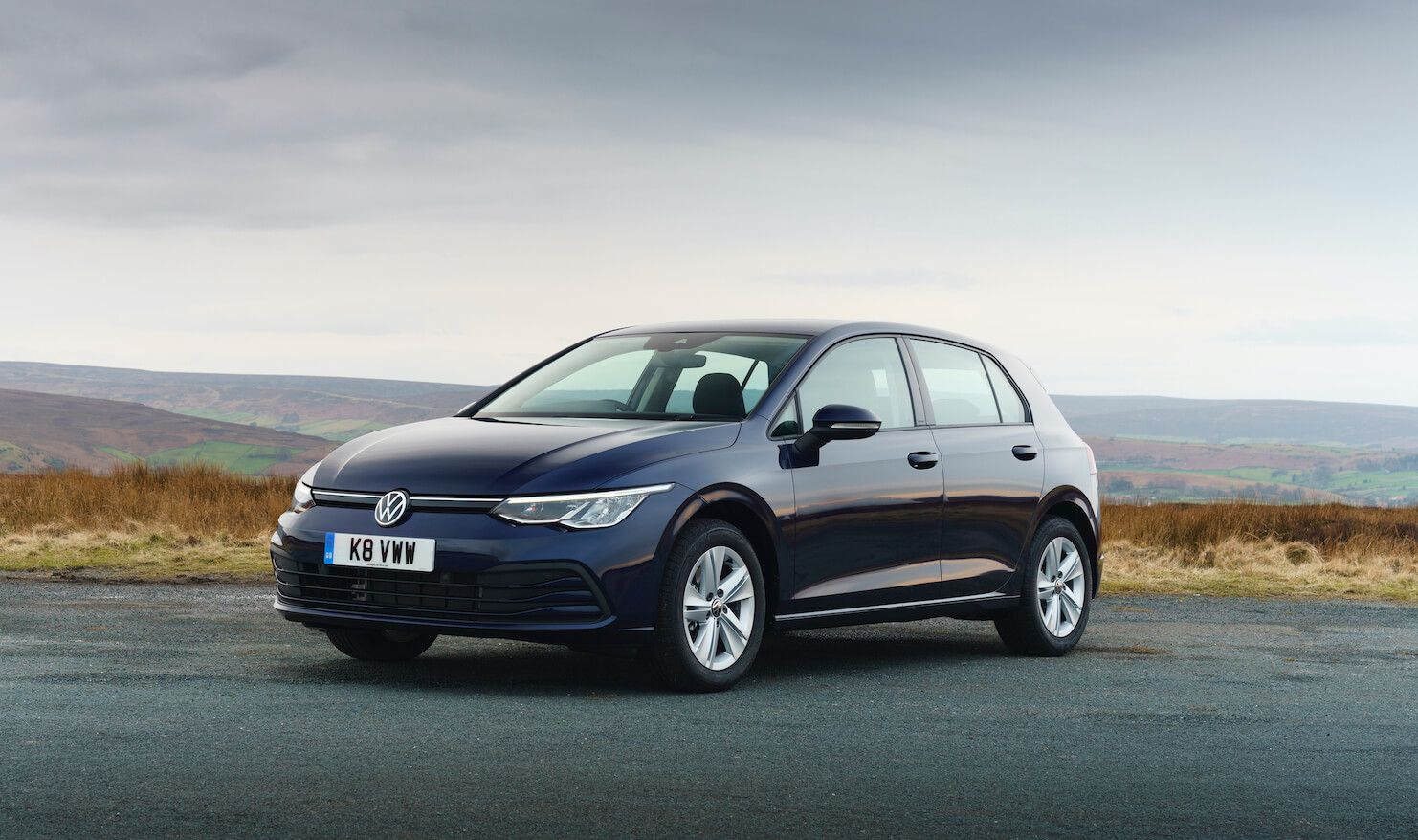
Summary
For some time, the best choice of family hatchback has been the Volkswagen Golf. But with a number of excellent new alternatives – such as the Mazda3 and the Seat Leon – can this new eighth-generation model continue to lead the pack?
Pros
-
Classy design
-
Efficient engines
-
Brilliantly refined and comfortable
Cons
-
Digitalised cabin takes time to adjust to
-
A few cheap-feeling interior plastics
-
Average boot space
Introduction
For more than 45 years the Volkswagen Golf has dominated the hatchback market, by far the German firm’s most popular car to date. A remarkable 35 million have been produced across 7 generations, and for 2020, buyers can get their hands on a new eighth generation model.
Set to be offered with the same comprehensive line-up of derivatives and engines, Volkswagen hopes this new Golf will be as accomplished as its predecessors. But is that the case?
Latest model
On looks alone, you might think this new Golf is little more than a facelift – its redesigned, arguably fussier front end is the main difference. But look underneath the bonnet and you’ll find some new mild-hybrid petrol engines. These bring fractional efficiency improvements, though the units are already excellent on fuel on their own.
But it’s the interior where the majority of changes have been made. Volkswagen has ripped up the rulebook – the majority of physical buttons are gone in place of new digitised displays, while large touchscreen and digital dials are included as standard.
Driving feel
The Golf has never been the sportiest car in this class, favouring comfort and refinement over thrills, and it continues to follow this path. The ride quality is superb for such an inexpensive car, which makes it a great motorway cruiser, and that’s helped by all the new driver assistance tech, including adaptive cruise control. There’s slightly too much wind noise, though, which is caused by the large door mirrors.
While the Mazda3 and Ford Focus offer a sportier and more agile drive, the Golf gets on with its business without any fuss, and it’s an exceptionally easy car to both drive and live with.
Looks and image
Like its driving, the Golf’s styling has always taken on a fuss-free fashion that manages to look classy without being over the top.
The design changes aren’t huge on this new Golf, but it’s arguably a fussier design than before. Up front sees the biggest change, with the Golf receiving a lower front end characterised by new LED headlights, along with fins resembling aero intakes in the front bumper. Viewed side on, it’s virtually unchanged to the previous car, but with such good proportions you can hardly blame VW for taking an ‘if it ain’t broke’ approach to the design.
Space
The Golf has always been bang on the money when it comes to spaciousness, offering all the room a small family would ever need. Rear space is good too, with adults able to get comfortable in the rear seats.
The boot remains an average size – measuring 375 litres. While a practical shape, and similar in size to the Vauxhall Astra and Ford Focus, it’s far from being the roomiest cars in this sector.
Engine and running costs
The updated Golf offers a wide range of efficient engines – including various petrol and diesel options.
A 108bhp 1.0-litre petrol unit kicks off the line-up, but it’s worth upgrading to the 128bhp 1.5-litre petrol engine. The same engine is also offered with an output of 148bhp, which is available with a six-speed manual or seven-speed DSG automatic transmission (it’s the only variant available with both). The automatic option also features mild-hybrid technology, which offers light efficiency enhancements and performance benefits.
With the diesel options, there’s a 2.0-litre engine available with either 113bhp or 148bhp – these being ideal for drivers doing more miles per year.
Regardless of which engine you go for, low running costs should be expected. Even the thirstiest petrol engine will still return a claimed 50mpg, with CO2 emissions of 129g/km. The most efficient option is currently the 113bhp 2.0-litre diesel, which promises nearly 70mpg, along with CO2 emissions of just 107g/km.
Powertrains
-
1.0-litre turbocharged petrol with 108bhp (manual)
-
1.5-litre turbocharged petrol with 128bhp (manual)
-
1.5 litre turbocharged petrol with 148bhp (manual)
-
1.5-litre turbocharged petrol mild-hybrid with 148bhp (automatic)
-
2.0-litre turbocharged diesel with 113bhp (manual)
-
2.0-litre turbocharged diesel with 148bhp (automatic)
Rivals
-
Kia Ceed
-
Vauxhall Astra
-
Seat Leon
-
Honda Civic
-
Skoda Octavia
-
Mazda3
-
Peugeot 308
-
Ford Focus
-
Mercedes A-Class
-
Audi A3
-
BMW 1 Series
Trim levels
Three trim levels are available on the latest Golf, with equipment highlights and pricing as follows.
Life
-
16-inch alloy wheels
-
LED headlights
-
10-inch touchscreen
-
Bluetooth
-
DAB radio
-
Apple CarPlay and Android Auto
-
Ambient lighting
-
Keyless start
-
Front and rear parking sensors
-
Traffic sign recognition
-
10-inch digital dials
-
Adaptive cruise control
-
Climate control
-
Automatic lights and wipers
Style
-
17-inch alloy wheels
-
Chrome window surrounds
-
LED strip running between the headlights
-
Upgraded LED headlights
-
High beam assist
-
Blind spot monitoring
-
Electrically folding door mirrors
-
17-inch alloy wheels
-
Sports suspension
-
Black rooflining
-
Carbon Grey interior accents
-
Stainless steel pedals
-
Sports seats
-
Driver modes
-
Privacy glass
-
R-Line styling kit
The Volkswagen Golf is now available in the Smart Lease range for a limited time. Find out more about leasing a VW Golf.
